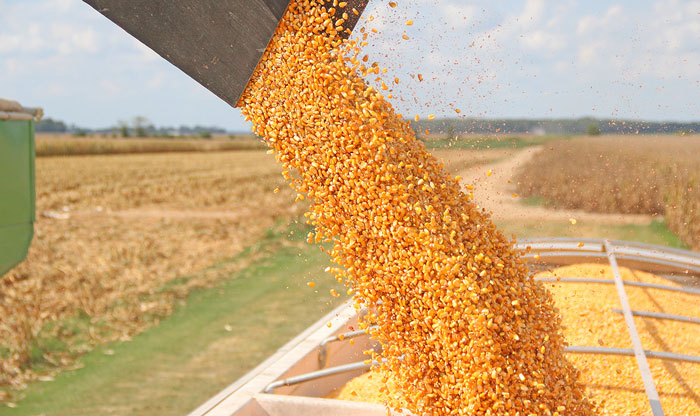June 7, 2016

Corn futures surged into a bull market on Monday as production concerns in the U.S. and Brazil, the world’s biggest exporters, sparked optimism that the global grain glut will ease.
Dry conditions have beleaguered Brazil’s crops so much that the nation’s chicken processors have been forced to reduce production as domestic consumers compete with foreign buyers for grain supplies. Now, a hot, dry spell in the U.S. Midwest is stoking concern that the North American summer will be tough on plants at a time when export demand is robust.
“We’re worried about the size of the crop in South America, we’re still debating that,” Don Roose, president of U.S. Commodities Inc. in West Des Moines, Iowa, said in a telephone interview. Following one of the strongest El Nino patterns on record, “people are definitely afraid of the weather this year. That’s the other driving force. The trade is willing to take a bet that we’re going to get warmer and drier” in the U.S., he said.
Corn prices have jumped 19 percent this year, snapping three straight annual declines. After multiple seasons of bumper crops, continued heat and dry weather could finally start to reduce the global supply overhang. It’s a story being played out across commodity markets, where years of low prices prompted farmers, miners and energy producers to trim output. The Bloomberg Commodity Index, which tracks returns for 22 components, is on the brink of being in a bull market for the first time since 2011.
On the Chicago Board of Trade, corn futures for July delivery closed at $4.2725 a bushel. That marks a gain of 22 percent since a settlement low for the most-active contract of $3.515 reached in January.
July Futures
July futures are up 20 percent since reaching a recent contract low of $3.5575 in March, also entering a bull market.
Last week, hedge funds and other money managers more than doubled their wagers on a corn rally. Speculators held a net-long position of 130,798 futures and options as of May 31, U.S. government data showed Friday. That’s the most since August.
Hot temperatures move into the U.S. Midwest this week, said Mike Tannura, owner of T-storm Weather LLC in Chicago. Rains are seen in the region from June 13 to June 17, while there is a risk that redeveloping heat will push the precipitation and cooler temperatures into the northern Great Plains and Canadian Prairies for the remainder of the month.
“This bout of heat does not appear to have staying power, but it once again provides fodder for the bulls that this is the taste of what we shall see later in the Midwest summer if we continue to transition toward La Nina,” Arlan Suderman, chief commodities economist at INTL FCStone Financial, said in a report Monday. “Weather anxiety and positive money flow toward the commodity sector creates a very nervous bear.”
The U.S. Department of Agriculture will issue its monthly crop supply-and-demand report on Friday in Washington. Traders surveyed by Bloomberg expect to see smaller U.S. and world reserves versus the agency’s May forecasts, as well as shrinking Brazil and Argentina corn crops.
--With assistance from Jeff Wilson.
To contact the reporter on this story: Megan Durisin in Chicago at [email protected]
To contact the editors responsible for this story: Simon Casey at [email protected]
Millie Munshi, Patrick McKiernan
© 2016 Bloomberg L.P
You May Also Like




